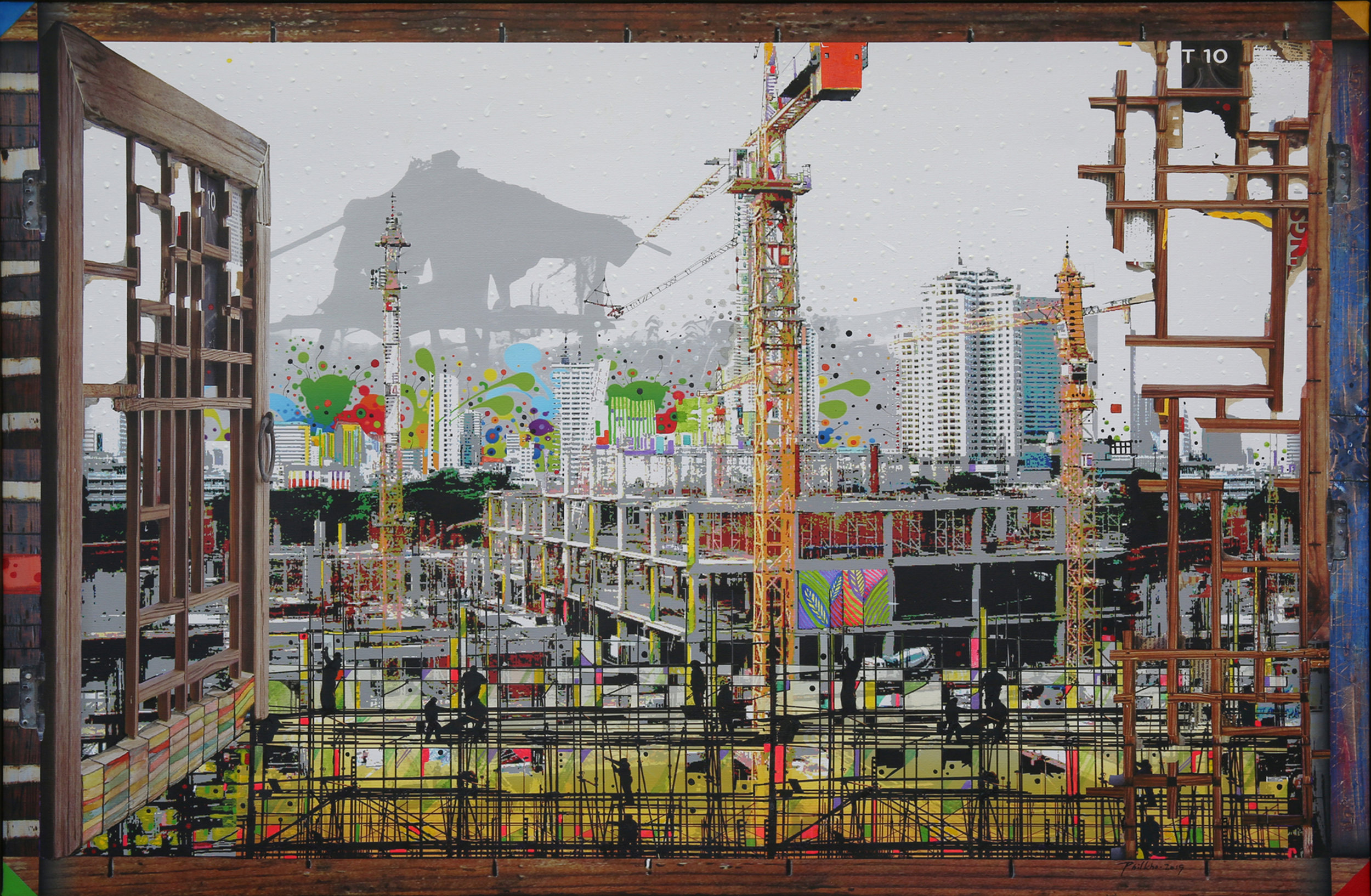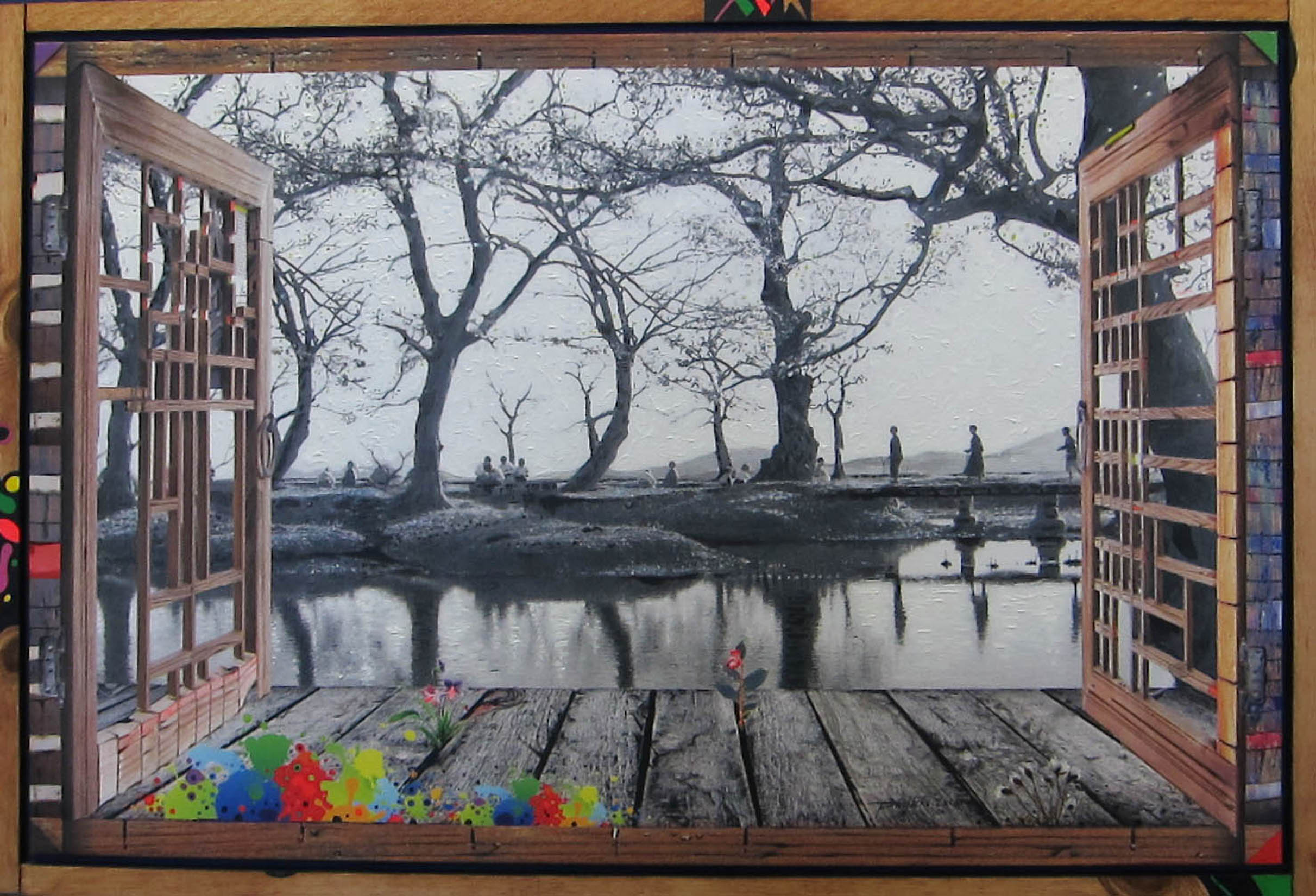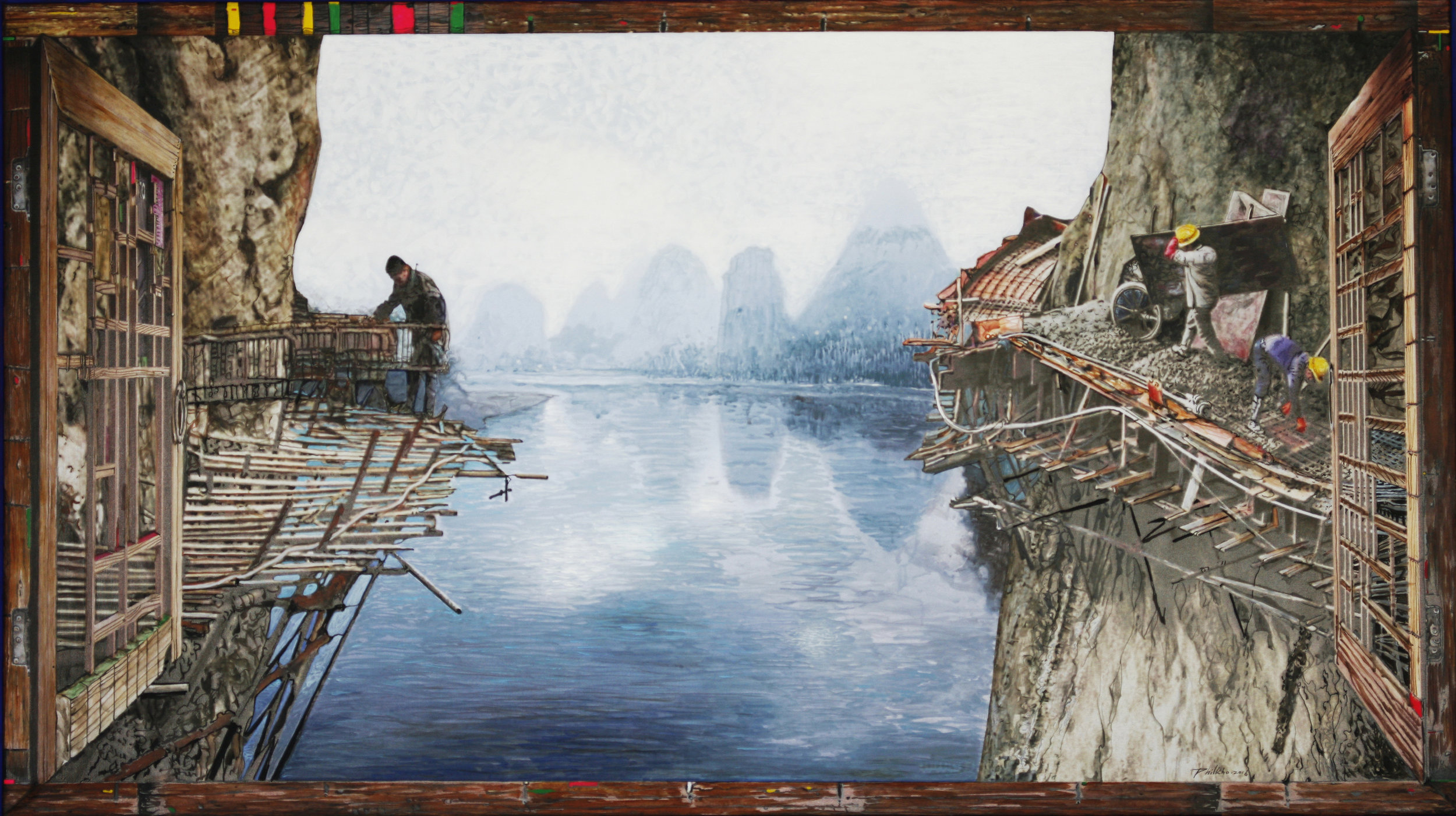Exploring the world of Phil Kho
By Erica Entrop The work of Phil Kho has many layers and elements which blend together so seamlessly that the boundaries between each facet can not be clearly drawn. In this blog I will investigate this motif present in three of Kho's pieces that highlight and yet blur modern and traditional modes of interpreting the world around us.
To begin one must be aware of Phil's background in environmental and graphic design. His resume highlights the many books he has published in these fields and his decades long involvement in the development of public spaces and parks in Korea. The themes of urban development and graphic design play a large role in the work currently on display at the Lois Lambert Gallery.

The first piece "City Construction" has two main characters almost at war with one another to inhabit the view from this window. The battle, as Phil describes it, is between the analog and the digital, the natural and the urban. These two forces trying to control one space in ways that are undeniably at odds.
The imagery was assembled from many different construction scenes that have been layered in such a way as to give the viewer a sense of the never ending stretch of the hand of man to manipulate our environment. However, as Kho has explained in his artist statement his work is about the meeting of contrasting ideas and in this work he demonstrates this intention by having a layer of almost black trees creating an impenetrable wall of nature. Giving these plants a permanent quality as they fence in the ever expanding cement structures. The men, simple silhouettes in the foreground, appearing as part of the scaffolding and not any part of the natural world.
Another element that Kho implements so well, is that of contrasting palettes.The structures and figures composed of mostly black and grey, exist in a muted world and again Phil makes the natural world known by giving it a palette of very bold, very rich colors. The sweeping organic shapes of color contrasted against the rigid straight monochromatic structures creates a pieces that is both chaotic and controlled, rigid and flowing.

Phil Kho is a master of mood and in each piece he manages to capture an emotion which the viewer is compelled to share. This work "Rural Landscape" captures that feature so beautifully, showing the viewer a quiet scene by a lake. The piece is almost entirely monochromatic, but again he implements very controlled use of color to maintain interest and energy without effecting the serenity of the scene
Another feature ever-present in Kho's work is the window frame. In all of his works currently on display he utilizes the concept of a frame to give the viewer the true sensation of looking out into a space. Sometimes the viewer feels as though their space is being invaded by the constructions crews hard at work as in "City Construction" or that there is an element of voyeurism, giving the viewer a sense of invading a space.

The last work that will be discussed is "Road Construction" in which the struggle between these two forces, man and nature, is playing out. The view is one of a calm bay, in a cool and limited palette that is being crowed by two cliff faces. climbing precariously on these imposing characters, are men working to build a pathway in full color and detail giving them visual prominence. Their task seems impossible and dangerous, yet one that is bound to be completed as that is the nature of man, to overcome.
Kho's work demonstrates his ability to play with concepts and materials that appear to be incompatible. From his use of opposing color palettes to the very imagery he uses, all of the elements of his work seem to fight and yet together that strike a harmony that his both inviting and intriguing. His process mirrors that of his concepts in that he builds the basis of each work digitally utilizing software to blend and join materials from many different sources into one congruent landscape. He then adds, by hand, the paint and organic shapes and lines that define the objects and actors present in each setting. He is a master of the balancing act showing us both the analog and digital aspects of our modern world.
